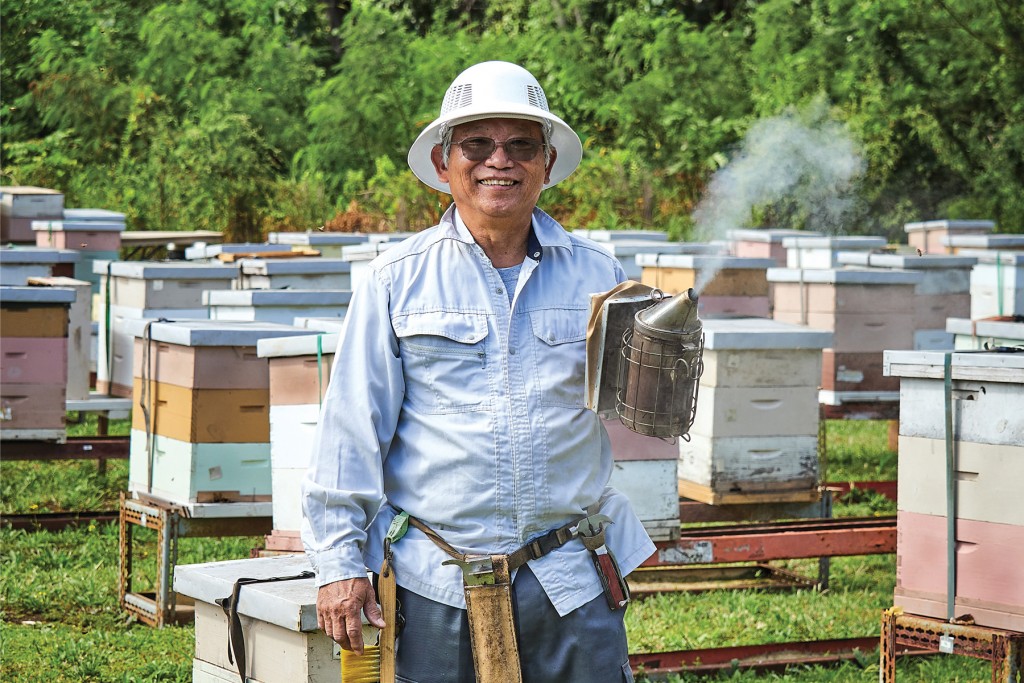My Job: Busy with Bees

We are continuing to publish stories researched and written before the COVID-19 crisis, such as this one.
Name: Dennis Takata
Age: 69
Job: Beekeeper & Owner, Hawaiʻi Tropical Honey
Beginnings: “My wife’s grandfather came to Hawaiʻi from Japan to start a royal jelly company,” the Kaimukī High graduate says. Royal jelly is a secretion from worker bees that’s fed to all larvae in the hive; its consumption can produce queen bees. People buy the jelly as a health supplement.
“The company did not do well, so he went back to Japan. I took over his hives in the early ’80s after he left. There were about 50 of them.”
The Salt Lake resident subleases about a half acre on what used to be Nalo Farms in Waimānalo to store his hives, which now number about 150.
His company’s name refers to the plants that contribute to the taste of his honey: “Christmas berry, avocados, some citrus – you’ve got a blend of all kinds of flowers in Waimānalo.”
What it Takes: “I learned about taking care of bees by talking to others, reading bee magazines and watching YouTube. The UH scientists are interested in studying my hives because I’m one of the few beekeepers who doesn’t treat their bees with chemicals.
“A hive is equivalent to a colony. A colony can consist of one to as many as six boxes. If there are three boxes, then two are for the brood and the top box for the honey.”
Special Equipment: “I wear a hat, a beekeeping veil that cinches at the neck, a long-sleeved shirt, jeans and boots.
“Anytime you open the hive, you need to have a smoker. A smoker is a metal container with burning wood chips and a bellow that allows you to control the direction of the smoke. The smoke will distract the bees away from the beekeeper and toward the hive.”
Getting Swarmed: Takata says capturing bees to move them to a new hive is normally “very satisfying,” but he was taken by surprise last October when a swarm surrounded him.
“It was shocking at first, but I guess the pheromones from the queen I was working with were so strong that they drew that swarm to land on me. I was a little shook up, because it was almost like being attacked. But later I took out my phone and started videotaping it.” Eventually, Takata was able to merge that swarm with another hive.
Challenges: “We have to battle bee predators: hive beetles and varroa mites can cause hives to fail. Losing a hive is the toughest.” Takata says last year was bad – he lost 30 hives over several months.
Misconceptions: “People think it’s the bees that do all the work, but it’s the beekeeper who has to do all the work – gathering the honey and keeping them alive, basically. I usually go out daily to the hives.”
Pay Range: It can be profitable if you market the honey, pollen, wax, propolis (bee resin), and the hives and queens for breeding.”






